In Conversation With Nick Harris, Founder of Orion and Watches By Nick
From Seiko modding, to watchmaking school, to launching his own brand.
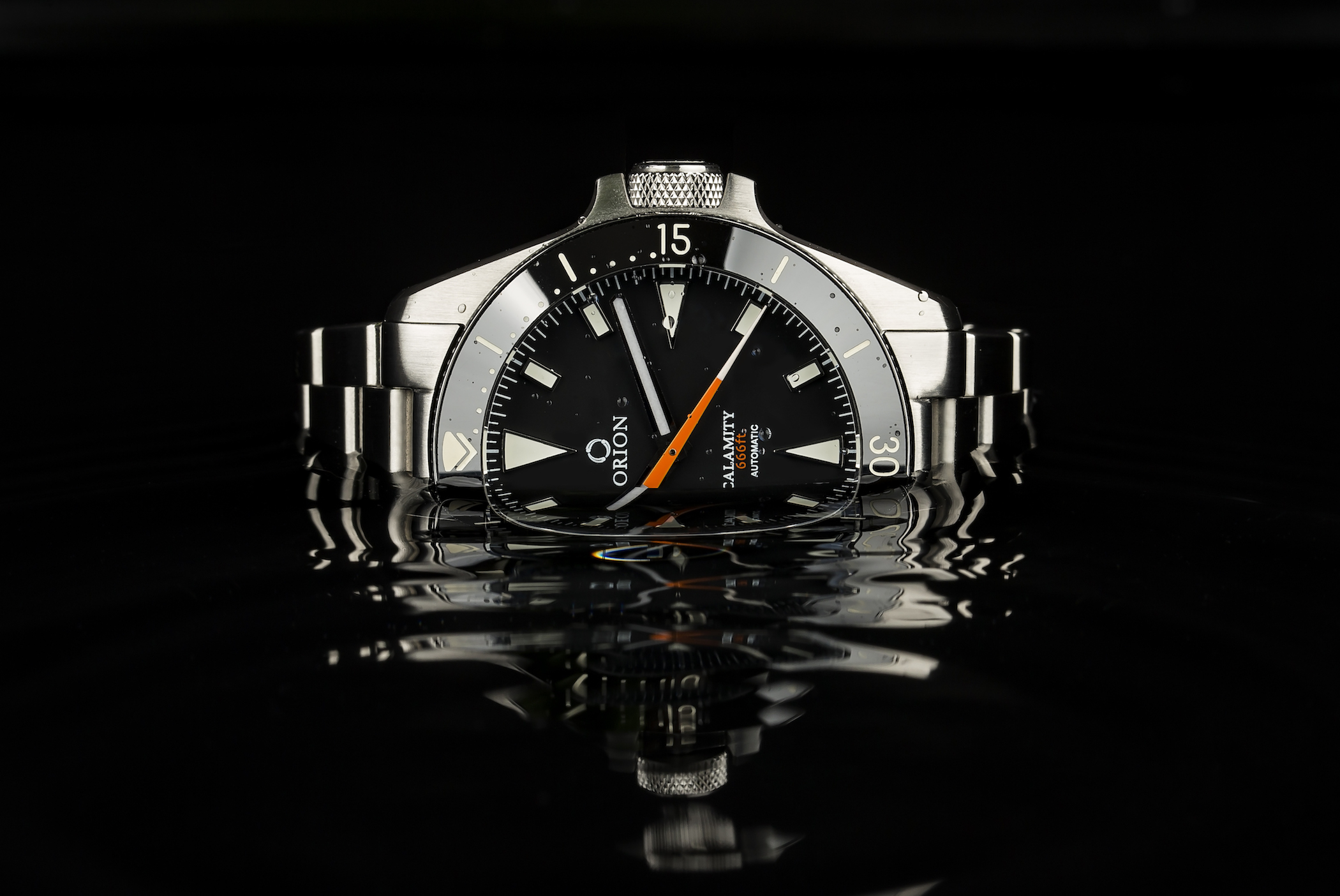
A somewhat surprising, yet very encouraging trend seems to be emerging in our tiny watch ecosystem. Young people from around the world, millennials who aren’t supposed to even care about traditional (‘outdated’) technology, are discovering a passion for mechanical wristwatches. And what’s more, they are finding interesting ways to explore and develop their own ideas, leveraging the boom in crowdfunding to help them create their own products and brands, many of which offer genuinely interesting additions to an already crowded market.
This seems all the more remarkable when you consider that none of these young creators has ever even had the need to wear a wristwatch, thanks largely to the advent of things like smartphones. Still, they are making the active choice to be a part of this world and to try and make a living from mechanical wristwatches. Today, we’re speaking to one such individual, a young man from the USA by the name of Nick Harris. The Seiko fans among you might recognise Nick’s name from his first watch-related project, Watches by Nick, which focused on modifying Seiko watches. Now, he’s studying full-time at watchmaking school and has launched his own brand, Orion, to help fund his studies.
We caught up with Nick recently to learn more about how his passion for mechanical watches began and where he hopes it will take him.
MONOCHROME: How did you first become interested in mechanical watches?
NH: It all began when I inherited a 1955 Omega Constellation, a family heirloom. My great-grandfather would travel a bit. Story has it he went to Germany and bought a bunch for friends and family. All of his gifts were destroyed in a house fire years later. I inherited the only surviving one, missing the crown, which prompted me to begin researching it and how to repair it.
MONOCHROME: And this led you to begin modifying Seiko watches?
NH: Yes, I quickly discovered that repairing a mechanical watch was not simple, or cheap. It was sometime while I was researching watch repair that I stumbled upon Seiko modding. It intrigued me and seemed like a fun creative outlet, so I gave it a shot!
MONOCHROME: How easy was it to get started? Do you think anyone can do it, or did you have some particular advantages, such as prior knowledge, training, etc?
NH: There was definitely a bit of a learning curve. Learning how to handle small parts or the proper way to assemble or clean things. There were many expensive mistakes, but those are the ones you learn best from. Learning watchmaking can be very frustrating, so having a Zen or relaxed mindset can help you in terms of problem-solving. And steady hands – if you have shaky hands it’s a pretty big disadvantage.
I didn’t have any prior experience; I did know I liked to work with my hands so it seemed like something I could tackle. You can read as much as you want about it, but in terms of watchmaking as a skill, there’s a touch and muscle memory you need to develop. Those things can only be imparted through experience.
So yeah, just jump in and don’t be afraid or timid in terms of failure or breaking stuff.
MONOCHROME: Once you started modifying Seikos, this hobby quickly turned into a full-time job, right?
NH: Right, it began as a hobby. At that stage, I was working full time and going to school to get a couple more prerequisites for graduate school for something biology related. The Seiko mods caught on, so I decided to quit my job and focus on modding Seikos and taking my courses.
MONOCHROME: At what point did you decide you wanted to go to watchmaking school?
NH: I think maybe about a year after I began modifying watches and grad school was looming, it presented itself as an option. Lots of science programs are serious investments in terms of time and money, definitely a long path. I was completely consumed by watches so I just googled ‘watchmaking schools’ and I discovered a few and just like that it was on the table. Compared to maybe a decade more schooling for sciences and huge sums of debt, the two-year programs for watchmaking school became very appealing. I was also encouraged by friends and family to go in that direction, as they witnessed my sudden affinity for everything watch related.
MONOCHROME: What have you learned at school that you hadn’t taught yourself already from modifying Seiko watches, and how has this knowledge helped in creating your own brand, Orion?
NH: So much. Every week I’m learning so many new things or refining my skills. What I taught myself was a drop in the ocean. Sure, I converged upon some good casing techniques and got fast at setting hands and crystals, but in terms of servicing and adjusting movements, I didn’t know much.
Watchmaking school has given me a different perspective on horology, it’s like the other side of the coin. When I was modifying Seikos, the casing components (case, dial, hands, and crystal) were very important to me, and you can inject a lot of value into those things. I definitely learned and am still learning so much about all those things. Approaching watch design from a horology standpoint and maybe a fashion or accessory design standpoint is very different.
Going forward with Orion, I can definitely see new techniques I picked up, personal manufacturing and finishing styles I resonated with and developed at school making an appearance in Orion. For example, in terms of finishing, watch movements are often blasted or frosted with a nice polished bevel. It’s such a delightful finish to look at, the contrast is subtle enough to be a treat but not overly flashy, like an entirely polished surface. On the Calamity, the finish is all brushed, except for a polished bevel along the edge. Somehow, the contrast makes that little bit of polish that much better, whereas polishing everything is a little bit like eating sweets (and no savory) all the time.
MONOCHROME: Can you tell us a bit more about your brand and what you think sets it apart from similar offerings on the market?
NH: I began Orion after Watches By Nick (which is what I went by during my mod days). My plan was to get my foot in the door as well as sustain myself during my tenure at watchmaking school.
Currently, I assemble most of the watches that go out. A portion of the standard Orion:1’s were assembled for me, but the rest were sent to me as parts. This is definitely the Seiko mod guy in me. I designed the Orion:1 case to be modular, friendly to people who would want to modify it, and for myself to do special editions down the line. Right now, there are a bunch of configurations for your Orion, I liked that ability to customize Seiko’s so I brought that to my watches with the Orion:1 and Field Standard (which share the same case). So, from picking out a blasted or DLC-coated case, to a fluted bezel or even a rare hand-engraved case, I’m offering a fun degree of customizability and hand-engraved pieces that aren’t really common, especially at my price point.
Going forward, I plan to bring all these aspects with me, but really step up the game and work on bringing horological and movement value to my watches. At school, we live under a loupe, a beautiful tiny world where even the smallest imperfections seem like travesties. It’s one of those things that once you see it, you can’t un-see it, so for my sanity, quality will be going up for Orion.
Speaking of the future, my end goal is to bring horological manufacturing back to the United States. I have this dream of converting a barn into a watchmaking facility, employing machinists, watchmakers, and designers to create amazing timepieces and help rebuild an infrastructure that has almost completely disappeared. I’m not just in it to make and sell watches; buying an Orion contributes to my goal of establishing more horology in the States. So it’s more than just what the watch is, or how it’s put together, but it’s my goals and ambitions that I think are a bit different as well.
MONOCHROME: What has surprised you most on your horological journey?
NH: Haha, that people who collect watches and watchmakers are polar opposites.
MONOCHROME: What have been some of the unexpected challenges faced along the way and how have you overcome them?
NH: So I like watches, when I started Orion it became more than just watches, it became a business. This was tough for me because I had never done anything like it. I had a few people in the industry to give some choice words of advice, but otherwise, I was figuring out a lot as I went along.
For every one person who gave me support, there were ten who told me what I was doing was wrong, destined for failure, or just wouldn’t work in some way. Some of these people were close to me too. So the biggest challenge was overcoming this seed of self-doubt that had been planted. I did my best to filter the voices and input that didn’t align with my goals, I calculated the risks and I went for it. And I’m glad I did because now whenever I hear that little voice crop up, I know it has no power and that I have the ability to work towards my goals and make them happen, we all do, but it sure can be hard to realize it sometimes.
MONOCHROME: What’s next for you and the Orion brand?
NH: Like I mentioned earlier I want to start the beginnings of a watchmaking facility, but most immediately I plan on graduating school and releasing my dive watch, the Calamity. I also have some neat ideas for the Orion:2 rumbling around in my head, but yeah I’ve got my work cut out for me. Need to assemble the A-Team!
For more information on Nick Harris and his brand, Orion, please visit the official website.

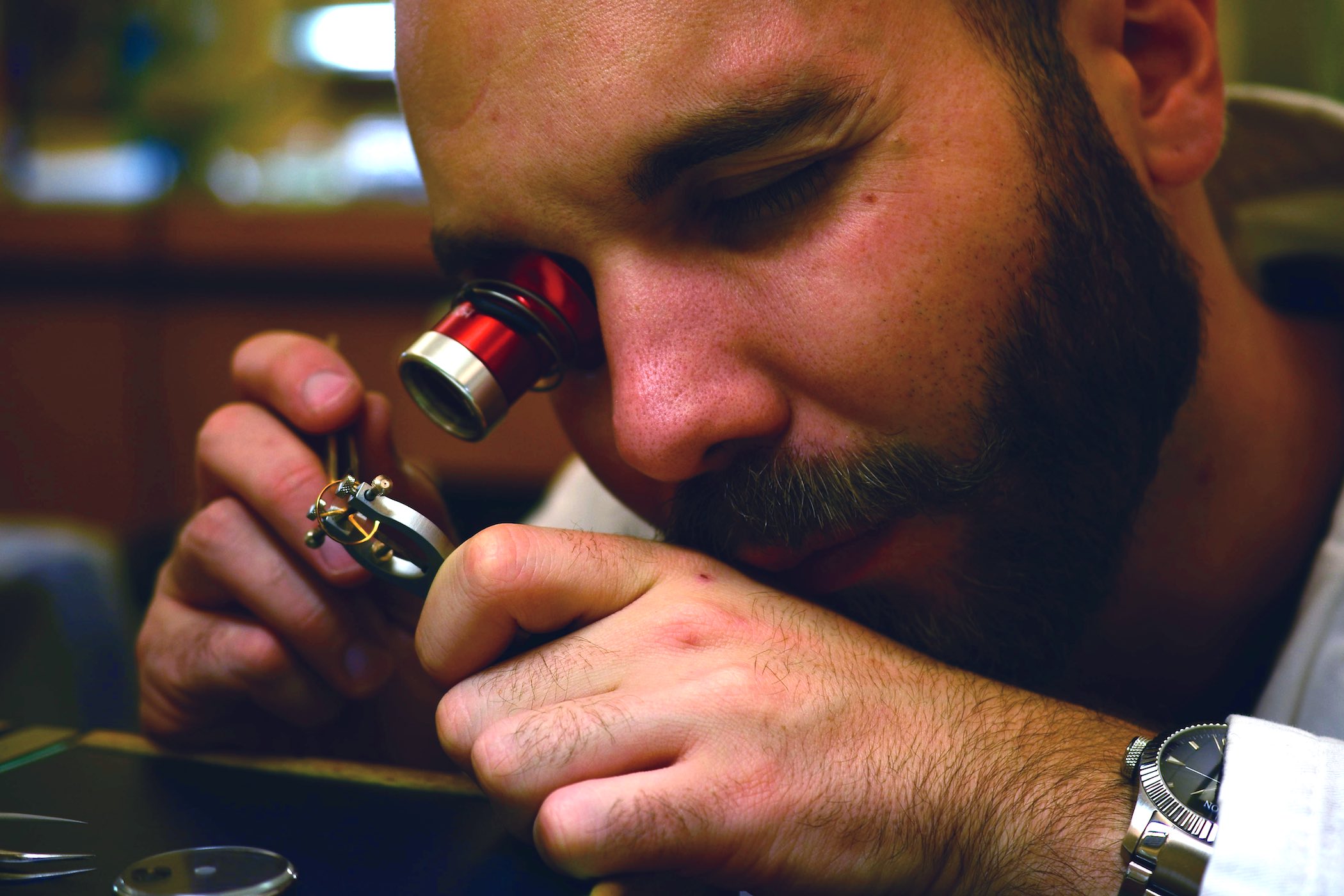
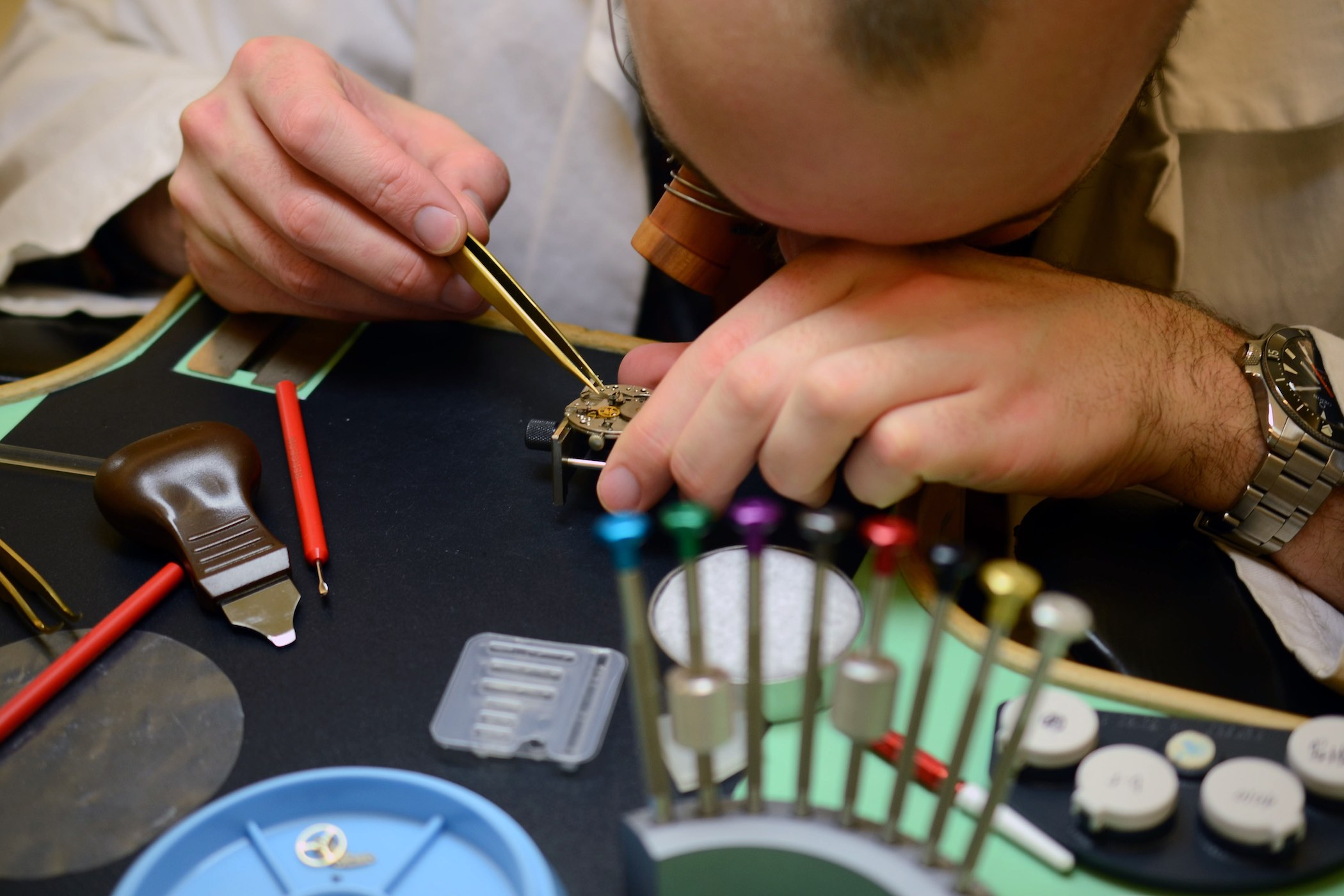
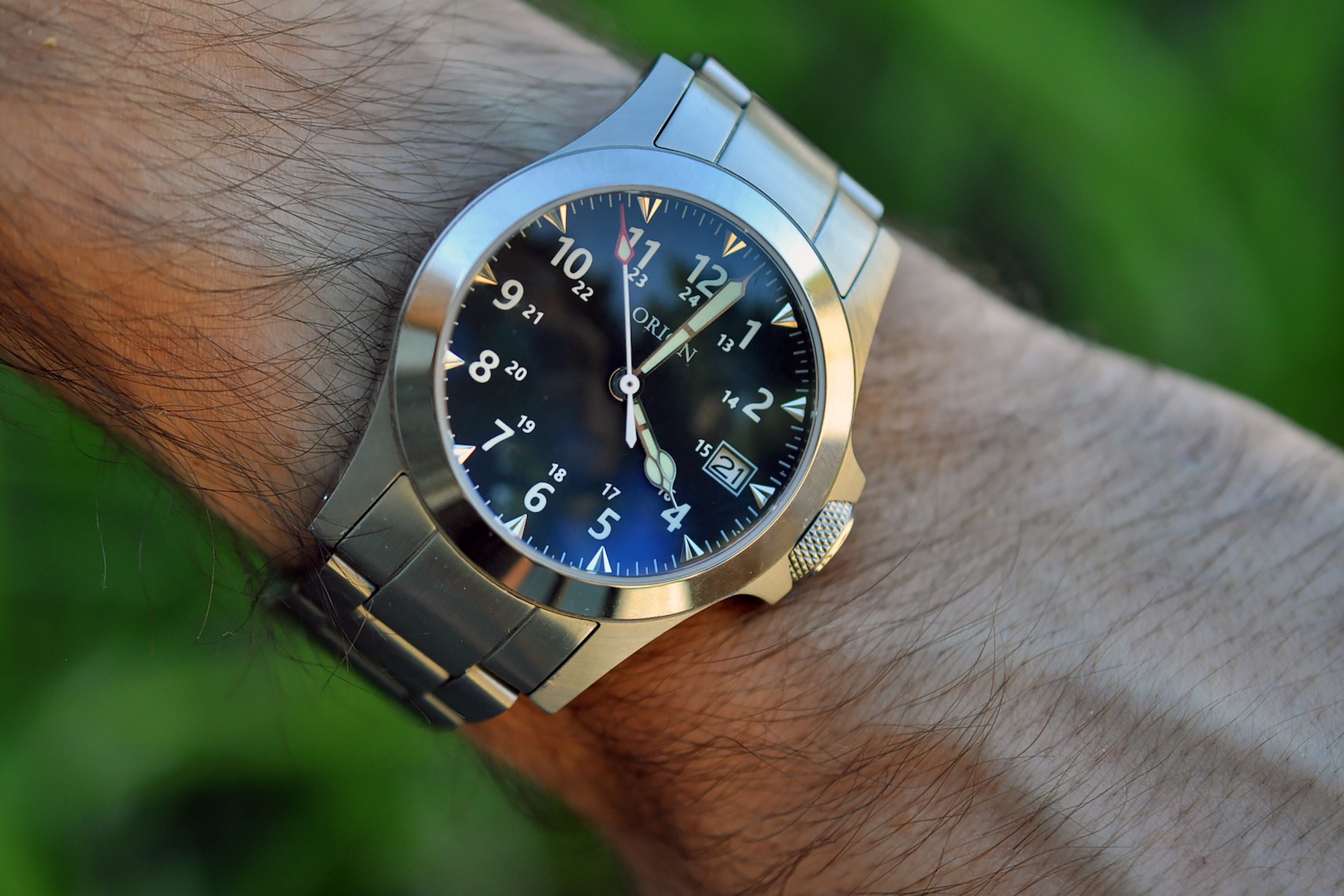
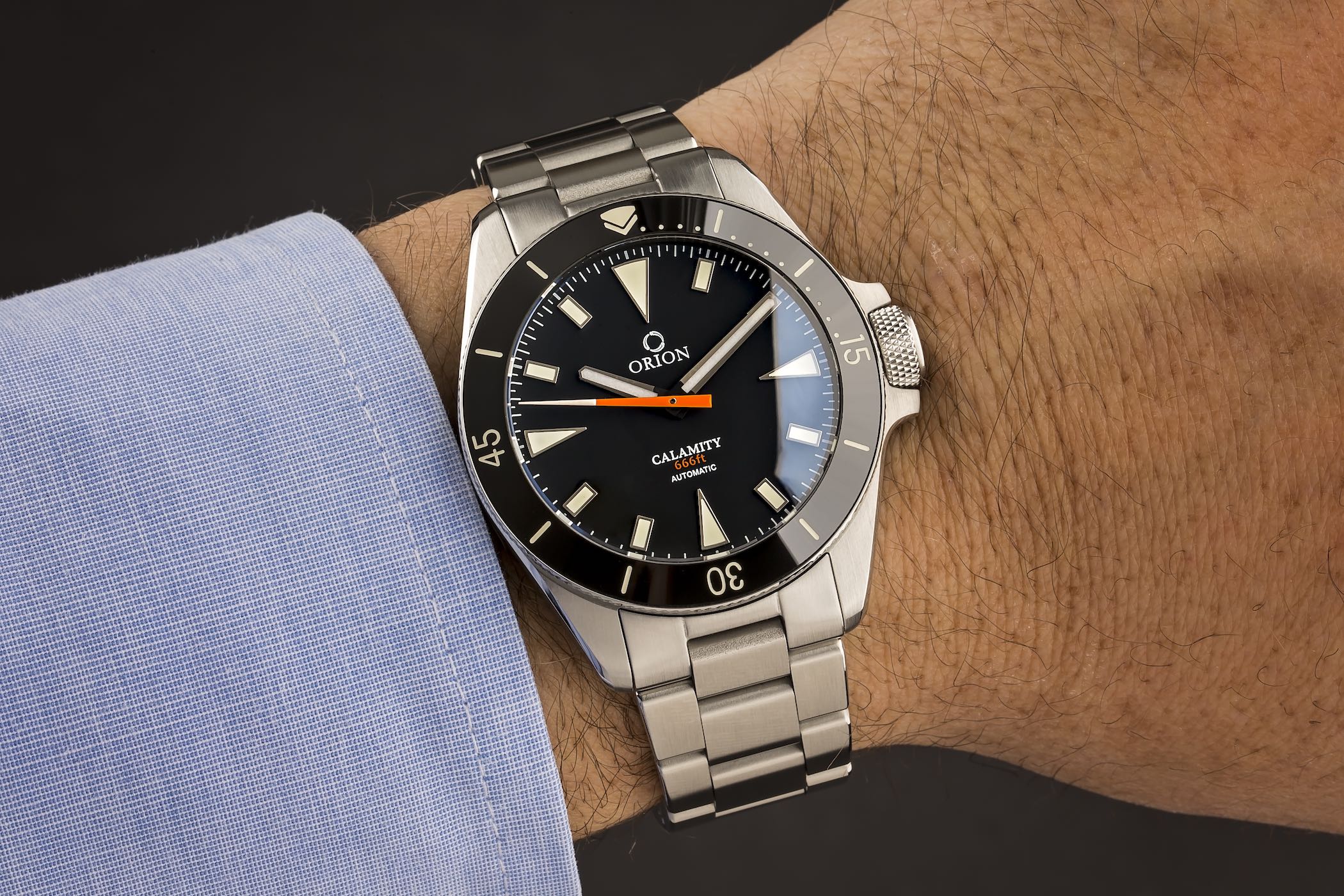
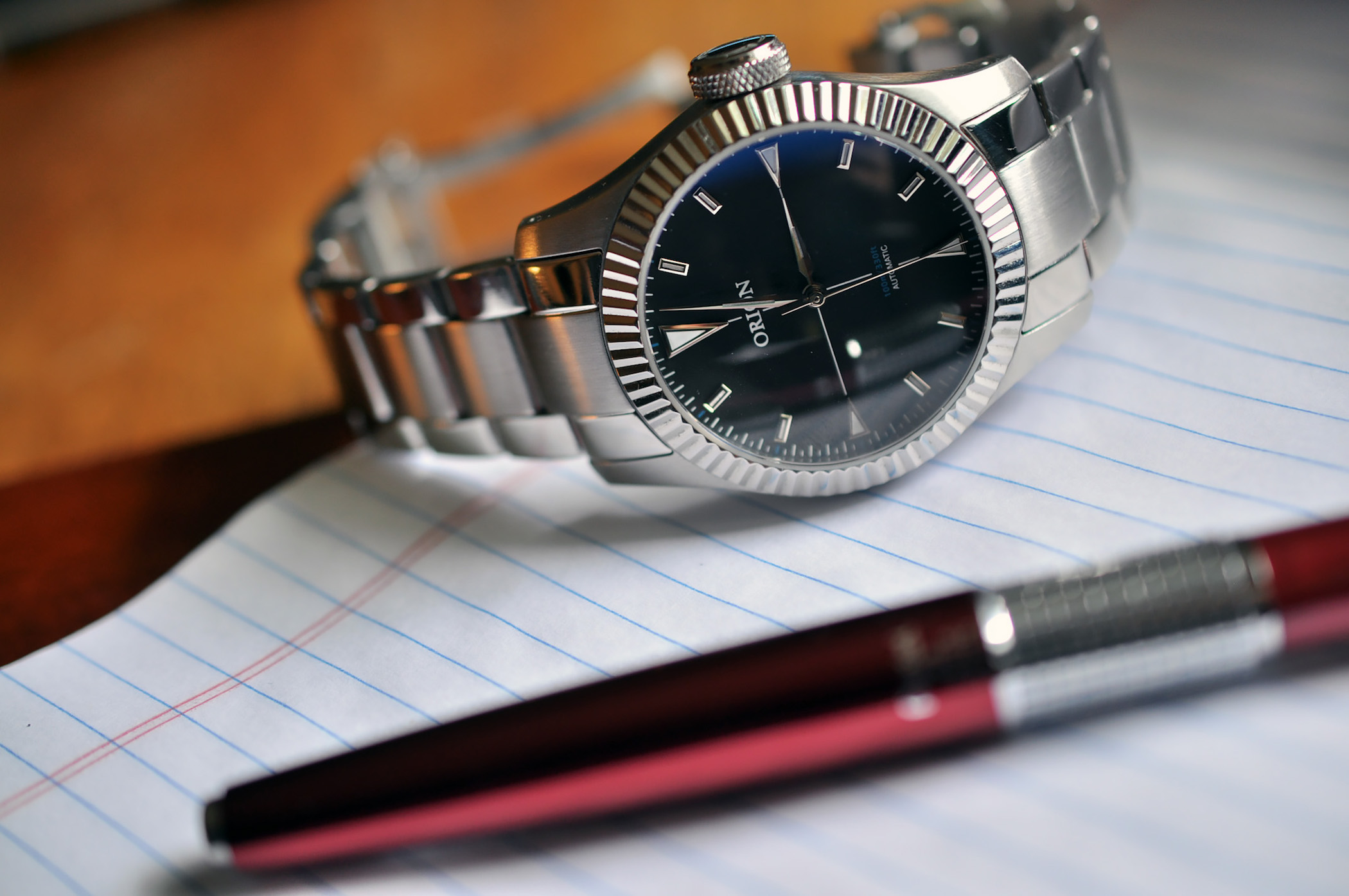
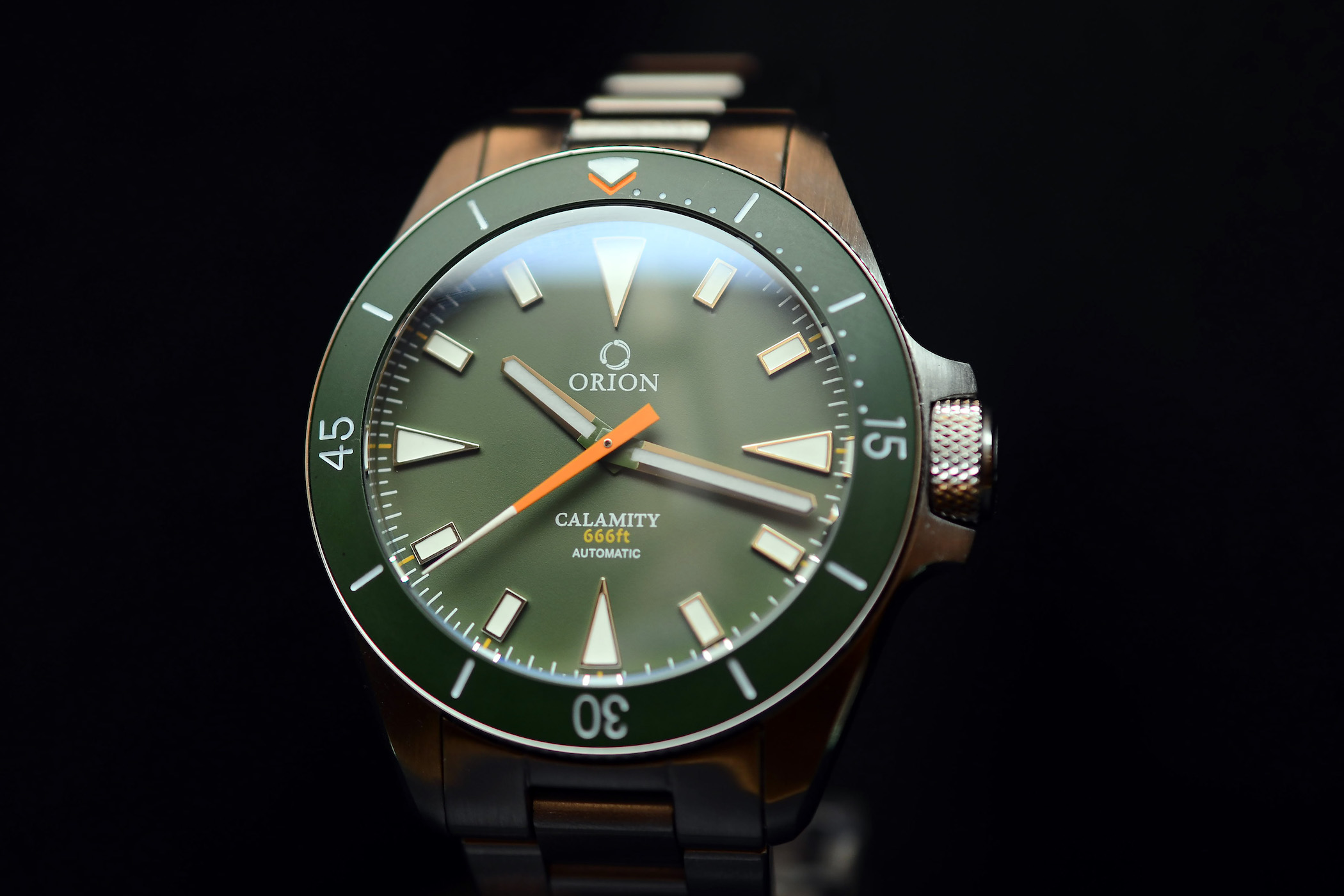
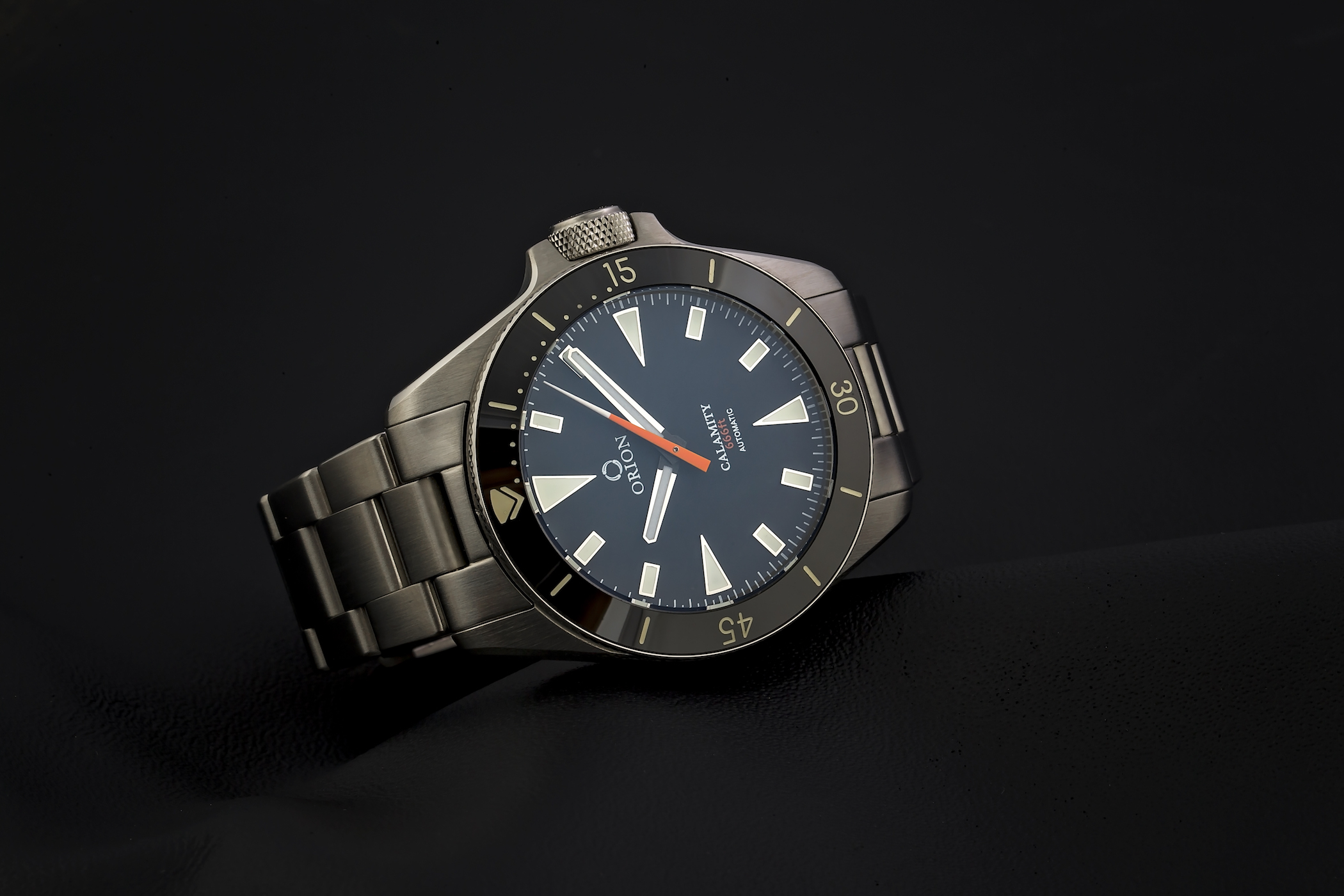



1 response
Thanks for bringing Nick and his venture to our attention. I’ve bought a Calamity as a result and look forward to helping Nick achieve his dream while scoring what appears an exceptional watch.